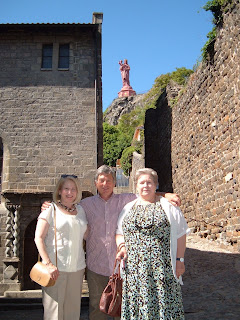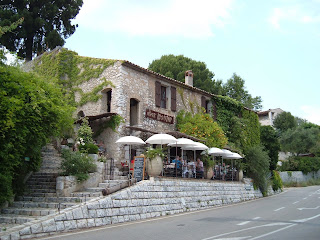I have now completed a year-long Fulbright Teacher Exchange. With some initial concern for the remoteness of France's geographic center I knew from the first moment I arrived that I could be at home in the Massif Central with the dramatic, awe-inspiring views of extinct volcanoes, spectacular mountains, gorges, forests and wide open spaces.
My little hamlet, Le Villard, composed of about seven stone houses, has been a wonderful place to live. From the very first days my French neighbors were so warm, friendly, gracious and helpful. I was invited, soon after my arrival, to a neighborhood "pique-nique" where I was introduced to many people from surrounding villages. My neighbors, the Deyrail and Nuel families were so friendly and included me for dinner or an occasional "apéro". Also, Monsieur and Madame Gilbert were always ready to care for the cat during week-end trips and their grandson Christophe was so helpful with tech/internet problems and appeared at the door with gifts of fresh caught trout. And there was dear Jeannot who invited me and my visiting friends and family to his home on so many, many occasions. He even included Roger on wild boar hunts and chanterelle mushroom gathering hikes along with continually stopping by with vegetables from his bounteous garden.

Roger and I hosted our last dinners and "apéros" for our French friends where we enjoyed talking about the year and saying our farewells.

















































